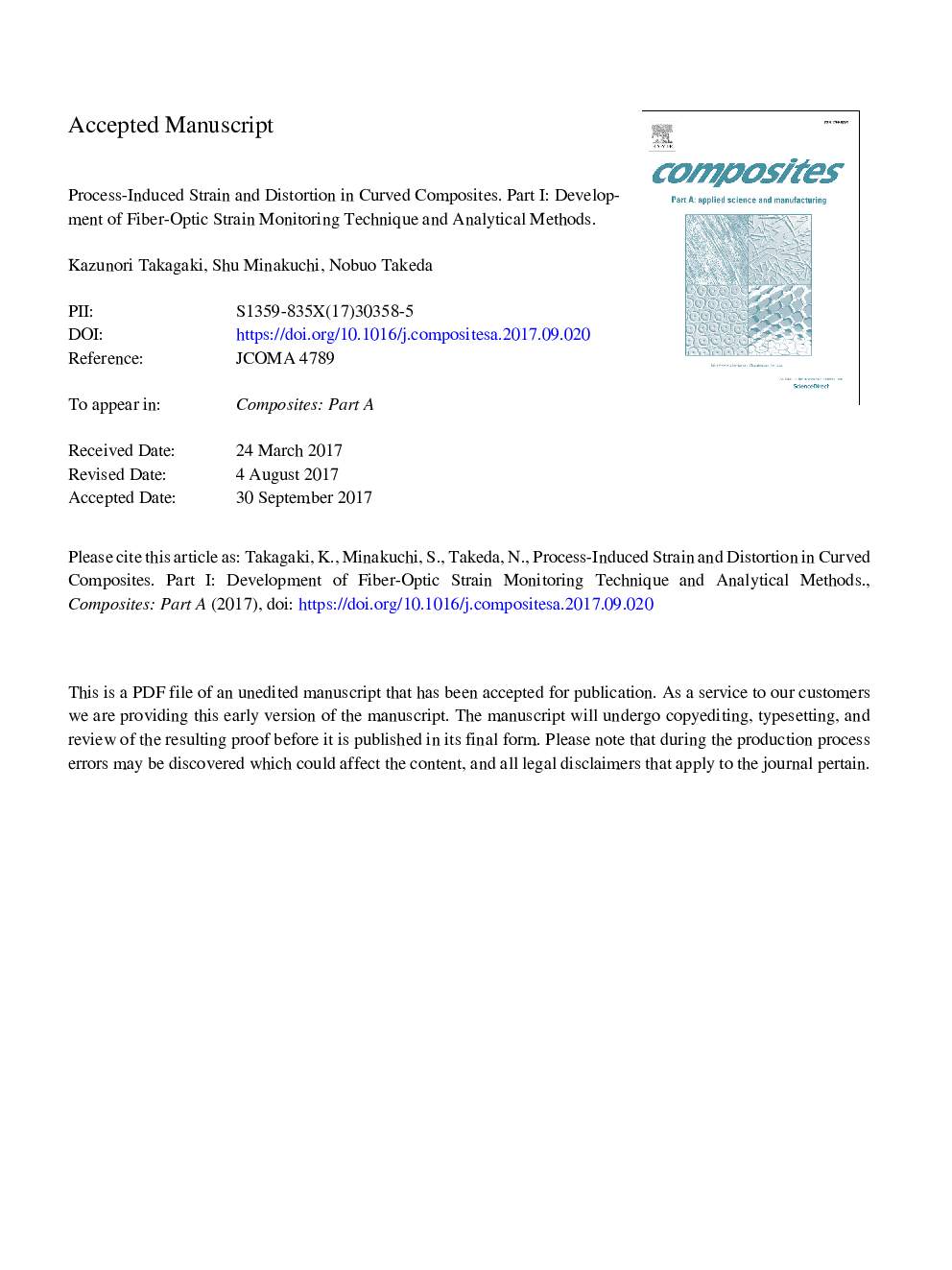| Article ID | Journal | Published Year | Pages | File Type |
|---|---|---|---|---|
| 5439377 | Composites Part A: Applied Science and Manufacturing | 2017 | 39 Pages |
Abstract
Process-induced shape distortion is generated in curved composite parts. Although the distortion mechanisms have been understood through considerable previous efforts, they were validated by indirect methods such as shape measurement, leaving some room for discussion. The present work developed a novel direct method using in-situ fiber-optic-based monitoring of through-thickness normal and shear strains. This method was applied to an L-shaped CFRP part and the result indicated that chemical cure shrinkage induces shear deformation. Moreover, the phenomenon gradually changed from shear-dominated to bending-dominated deformation as curing proceeded. The shear-lag analysis developed in previous work was then extended to L-shaped parts. The effects of flanges and edge constraints were investigated based on analytical and experiment results. The analysis also proposed a spring-in prediction scheme that uses strain monitoring results as inputs. The prediction agreed with the experiment result, indicating that cure-induced shear deformation should be considered for highly precise distortion prediction.
Related Topics
Physical Sciences and Engineering
Materials Science
Ceramics and Composites
Authors
Kazunori Takagaki, Shu Minakuchi, Nobuo Takeda,
